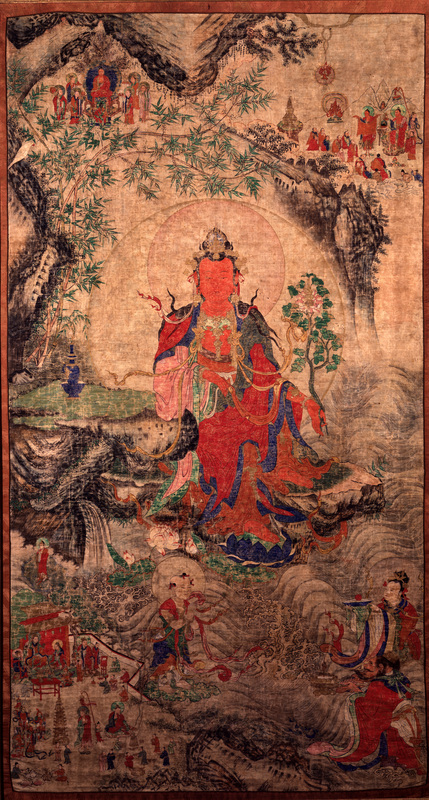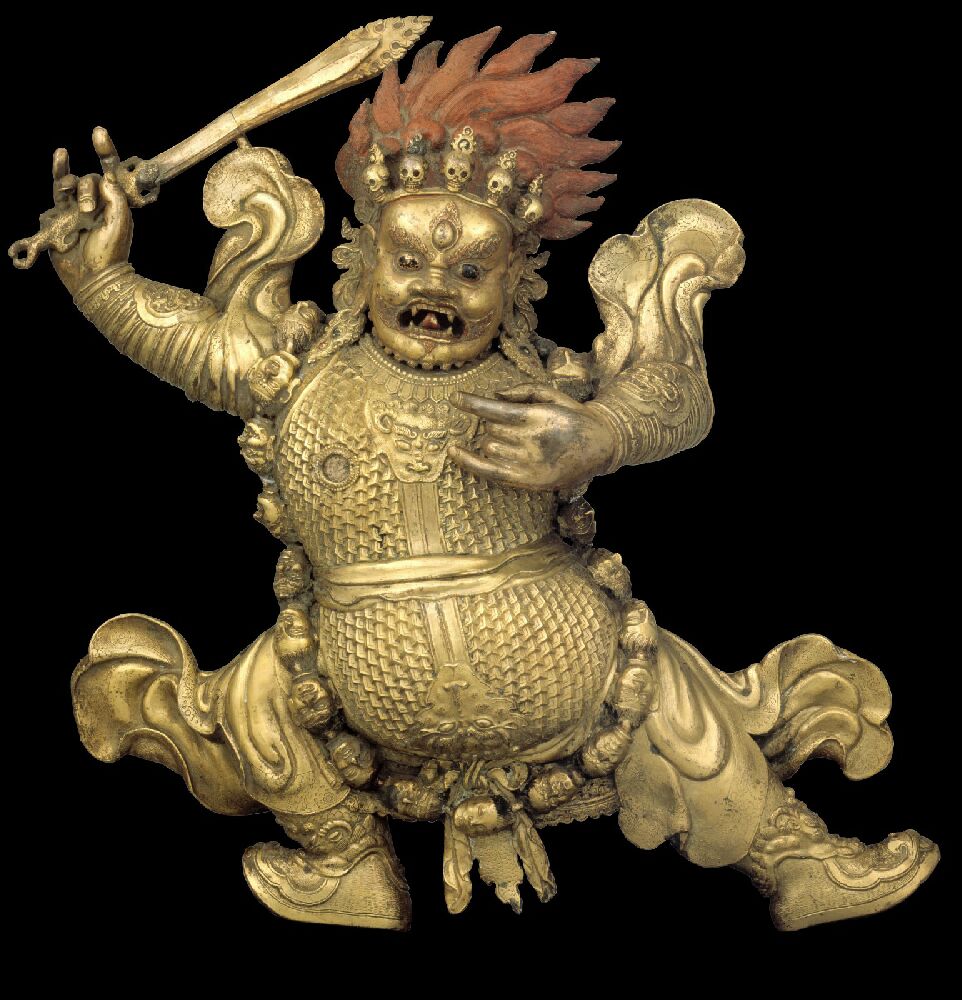This is a guest post about our Senior Writing program written by Nina Goss.
My first visit to the Rubin was in early 2011, to see a movie I’d read a review of in the Times, by a woman who’d been unnerved by premonitory dreams. Finding the correct entrance door on 17th street felt like a test in a fairy tale, and when I passed it, I found myself in your enchanted kingdom. A place lustrous and shadowy and safe and thrilling all at once.
I became a member right away, more for the feeling of being somehow part of the enchantment than for the discounts and privileges. The Rubin has offered me one inspiration after another: I could spend one day considering the different ways a viewer moves through space and time in a Tibetan painting and in a perspective-based western painting. I could listen in on the conversation between a neuroscientist and a well-known Buddhist author and teacher on the subject of the brain’s plasticity. I could attend a writing workshop that invited participants to meet and then re-create an artwork based on our imaginations and memories.
Ashley Mask’s offering me the chance as a volunteer to help lead the Senior Writing Workshops was a great gift. My background teaching writing and working with seniors could now be put to use in a place that had brought me an entirely new range of feeling and curiosity in my encounters with art.
Ashley created the writing sessions in 2011 as a chance for seniors already enjoying the programs offered on the first Monday of every month to explore personal expression through creative conversations with artworks. The program runs from 2:00 p.m. to 3:30 p.m., and we host up to 15 participants who have registered in advance, or who may join that day. The sessions rotate through the temporary exhibits and the galleries. Ashley or a Museum Guide will select a piece to launch the session and then lead a discussion with the group that employs the Visual Thinking Strategies (VTS) methods. The discussions encourage all of us to see that approaching art from response leads to inexhaustible curiosity. The Guide will bring out expressive, sensory, and imaginative descriptions of the work and prime the participants’ attention for their own written responses to a work of their choosing in the gallery or exhibit. I step in, and invite the group to find a piece that speaks to them and compose an impressionistic or expressive, and entirely personal, word picture of their piece. At 2:45 we round ourselves up and proceed to the Education Center, where I offer a variety of loose prompts to transition from their word sketch to a more composed piece of writing growing from their gallery work. They write for 15-20 minutes, and in a small group we are able to hear and enjoy each person’s piece. Samples of work done in the groups in recent months are posted below.
Some visitors repeat the sessions month-to-month, and we always have newcomers. The spirit is communal and encouraging. Participants are comfortable sharing their work as well as expressing their pleasure and wonder in each other’s writing.
If you know of any seniors who haven’t yet partaken of Free Seniors Day, please let them know about this chance to deepen their experience of the Rubin’s collection and special exhibits. They can explore creativity and expression in a warm and encouraging environment, and connect with like-minded people.
 Snake Goddess Manasa
Snake Goddess Manasa
Northeastern India; circa 12th century Phyllite C2005.36.2 (HAR 65569)
Voluptuous body, breasts and tummy
Cobras worn like a peacock’s tail, granite shines-white in the crevices
Comfortable, inviting posture
Sitting on an altar that looks like some fountains
I am sufficient in myself
Available, open, but don’t mess with me
I am in a sacred place and invite you to share in my spirit of love, abundance, and wisdom
The cobras do not bite, they form a shield of beauty like a peacocks tail
But beware my pet cobra who is always by my side, fangs revealed.
–Harriet
 Bodhisattva Maitreya, the future Buddha
Bodhisattva Maitreya, the future Buddha
China; 15th century Pigments on cloth C2006.66.34 (HAR 1111)
A sort of earthly paradise complete with ascending levels. Perhaps the intention hoped for is that various figures are requested by the surroundings they inhabit. The most modest scenes of nature and possible pilgrims are evolving upwards to a dominant and resplendent central figure. The scene continues upward to a hint of a distant celestial scene. A kind of halo almost from a most appears around the benevolent deity of indeterminate (male Bodhisattva) gender. The halo is engulfed with both another are and further surrounded by a possible symbolic natural scene of Bamboo.
5 words in 4 lines “Bodishavtva’s lesson”
Infinite satisfied dreamy past memories
bringing comfort with its simplicity
longing presences spark talent desires
A wonder if ever-peace
–Tom
 Begtse
Begtse
Mongolia: late 18th-early 19th century Gilt copper alloy with pigment C2005.12.3 (HAR 65414)
This is a fierce and powerful entity. Reptilian and a fiery destroyer, he wears a full body string of trophies (The skulls that crosses his first chakra). He is powerful of body, stocky and full bellied. So full bellied one might think he at his victims. He is glutinous; his armor and mouth are reptilian, His tongue a snake like flickering flame, like the flames that crown him. His swirling clothing images warrior energy.
His face is bursting, his eyes are protruding. It is as if he were about to explode. His sword is raised, about to strike. You don’t want to mess with this golden spirit.
–Diane



One Response to Oh, the Stories They Tell: Using Art to Inspire Senior Writers